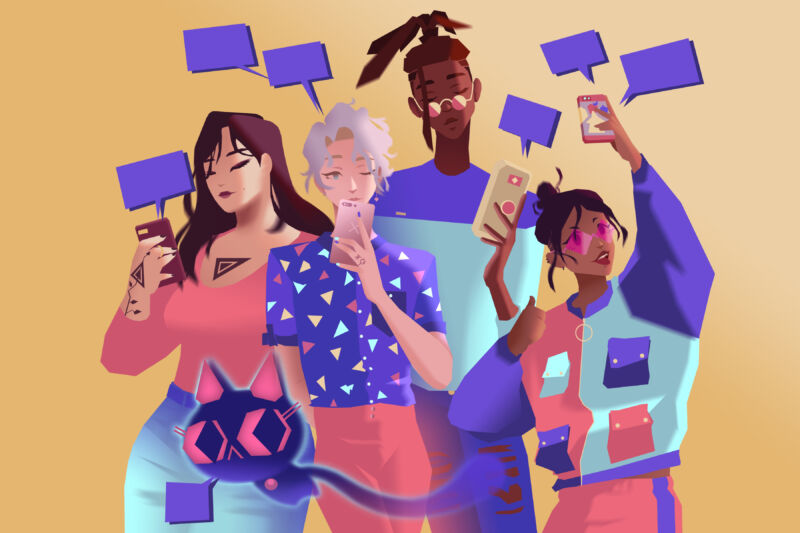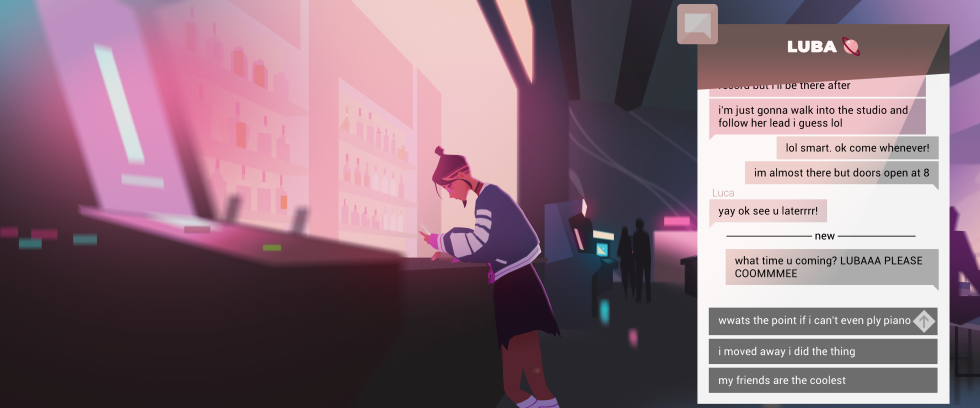
Team OFK
Imagine versions of The Monkees TV series or Beatles films like Hard Day’s Night for the modern era. What might those look like? I don’t just mean aesthetically—even though any “songs within the show” would certainly differ from the jangly ’60s likes of “Daydream Believer.” What kind of story would it tell? Where would the series air? How would it be presented?
I returned to this thought often while enjoying this week’s We Are OFK, which is as close to an answer to my question as I’ve seen in a modern, hyper-connected era. This format-blurring experience may be marketed as a video game, out Thursday on PlayStation consoles, Switch, and PC, but it’s somewhere between an interactive experience, a passive TV series, and a visual novel. And its production values and brave storytelling choices benefit wildly from this platform-agnostic approach.
A “video game” that leaves exes on read
Team OFK
The six-hour experience, broken up into five “episodes,” follows four restless and disaffected Los Angelenos in a fictional, slightly modified version of our own world. Certain brand names are changed (Twitter is now “Twibber,” Tinder is “Phoenix,” etc.), but its characters otherwise order ride-share cars, leave messages on read, and doomscroll like modern-day twenty-somethings. Each of the four lead characters came to LA to escape their old lives—an issue each reckons with in different ways—and, at the outset of this series’ episodes, find themselves drawn to each other as a “band” while chasing their own respective artistic and romantic dreams.
This largely resembles an anime or CW TV series that focuses on the lives of young people, as opposed to a thriller or action-filled drama. Yet, despite not regularly tuning-in to that kind of fare, I found myself engrossed by We Are OFK‘s combination of high production values, fantastic voice acting, and tasteful dollops of interactivity. Mechanically, the episodes can either work as a visual novel or a wholly passive TV-watching experience. Choices do not create diversions in the plot; instead, players occasionally choose one of three dialogue options for a main character. These appear as thought bubbles with differing opinions that logically coexist as a response to what has just happened. You can pick your favorite to guide a character’s dialogue in a given scene or let the game auto-select one after a 10-second pause.

Team OFK
The game’s other clever “interactive” content comes when the perspective zooms to a character’s smartphone, where players watch text message conversations play out in real time. These alternate between rapid-fire message bursts and an ellipses icon (…) indicating that the character on the other end is either typing, pausing, or deleting. We Are OFK is careful not to overdo this with excruciatingly long pauses. Instead, sometimes the game lets you press a button to skip ahead with a prompt saying something like, “stare at the phone for five minutes while waiting for a response.” In these interfaces, the game lets you use a joystick or a mouse to optionally scroll up on the virtual smartphone screen and see prior messages and emoji exchanged between characters. This cute Easter egg of character development reminds me of hidden, clickable bits in Flash animations of yore.









